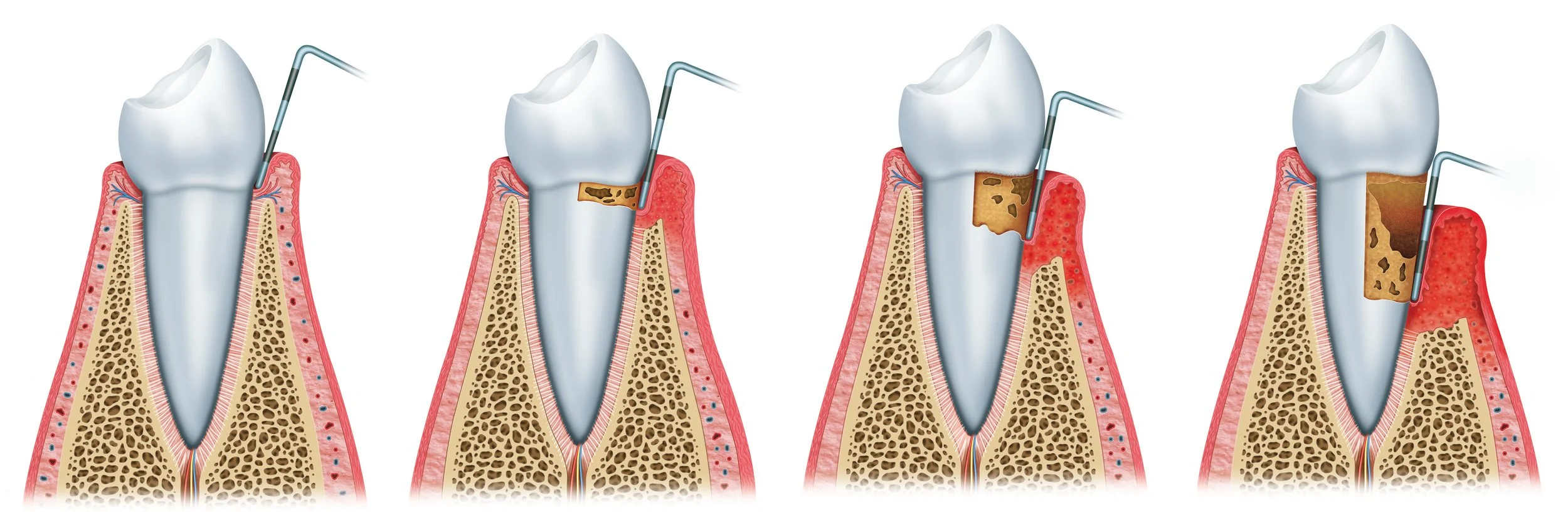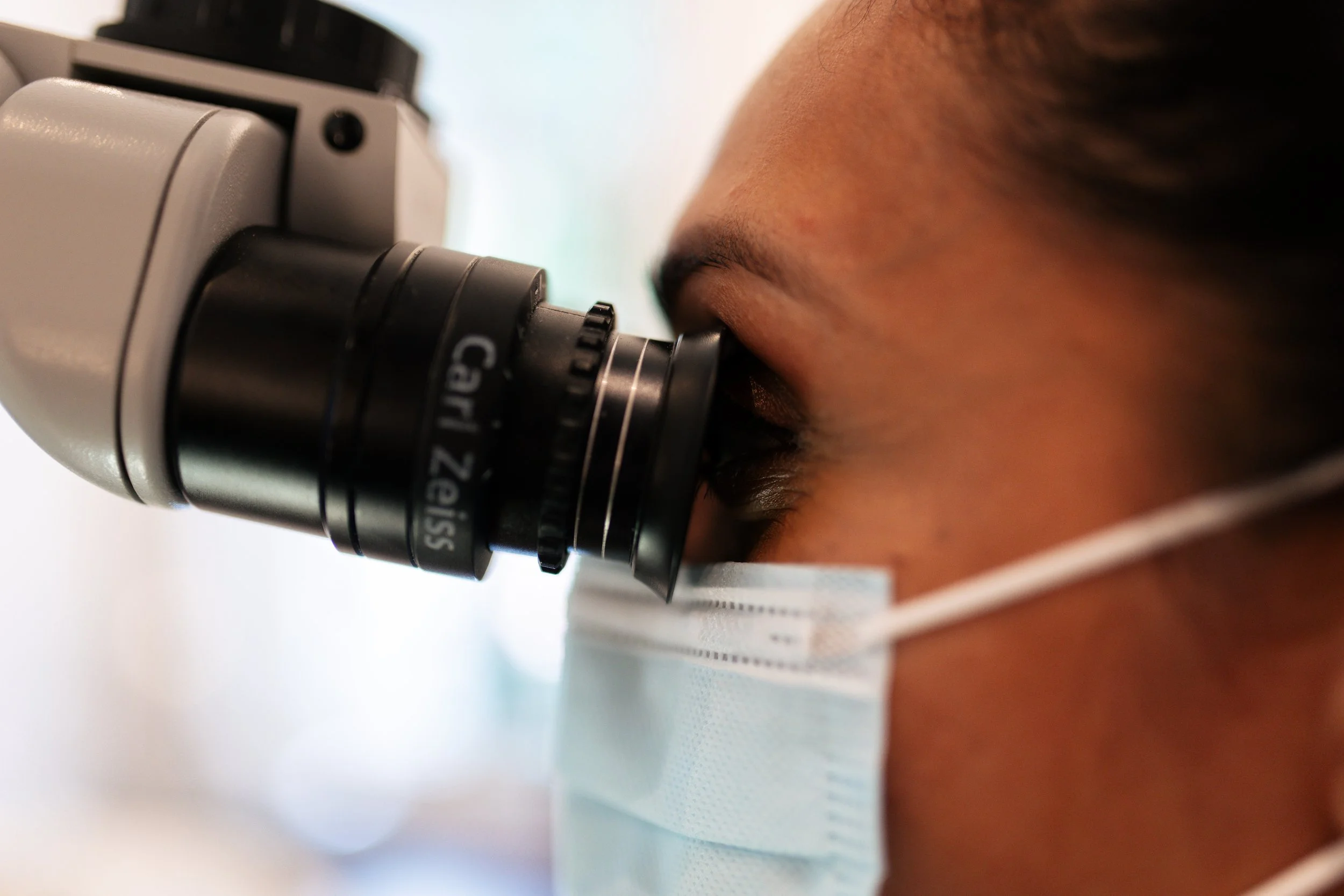The Clinical Stages of Gum Disease: A Detailed Progression for Informed Decisions.
Navigating a diagnosis of gum disease, medically known as periodontal disease, can feel overwhelming. You might be sifting through various treatment options, comparing invasive procedures with cutting-edge alternatives, and weighing the long-term implications for your oral health. To truly evaluate the best path forward, you need a precise understanding of the disease's journey—from its earliest, most reversible stages to the advanced conditions that threaten tooth loss. This knowledge is your foundation for making a confident choice.
Understanding the Spectrum: Why Staging Gum Disease Matters
Gum disease isn't a singular condition, but rather a progressive infection that affects the tissues supporting your teeth. It starts subtly and, if left untreated, can lead to significant damage. Accurately staging this progression is paramount. It allows dental professionals to tailor treatment plans precisely, predict outcomes, and provide you with a realistic understanding of what to expect. Without this detailed clinical framework, treatment decisions become generalized, and the nuances of your specific condition might be overlooked.
Clinical Breakdown of Gum Disease Stages
The journey of gum disease typically begins with inflammation of the gums, known as gingivitis, and can progress into various stages of periodontitis, characterized by increasing damage to the bone and supporting structures. Understanding these distinct phases is crucial.
Stage 1: Gingivitis – The Reversible Beginning
Gingivitis represents the mildest form of gum disease, characterized by inflammation of the gum tissue without any loss of the bone that supports the teeth.
Symptoms: You might notice your gums are red, swollen, and bleed easily, especially when you brush or floss. However, there's typically no pain at this stage. You might also experience mild bad breath.
Pocket Depths: In a healthy mouth, the gum tissue fits snugly around the tooth, with pocket depths (the space between the tooth and gum) typically measuring 1-3mm. With gingivitis, these depths generally remain within the 1-3mm range, but the presence of bleeding upon probing signifies inflammation.
Bone Loss: Crucially, there is no clinical attachment loss or bone destruction at this stage. This is why gingivitis is considered entirely reversible.
Diagnostic Criteria: The primary indicator is gum inflammation and bleeding upon gentle probing, without radiographic evidence of bone loss.
Prognosis: Excellent. With diligent oral hygiene and professional cleaning, gingivitis can be fully reversed.
Stage 2: Moderate Periodontitis – Initial Signs of Damage
If gingivitis is left untreated, it can advance to early periodontitis. This marks the beginning of damage to the bone and connective tissues.
Symptoms: The inflammation intensifies, leading to more noticeable gum recession and potentially increased tooth sensitivity. Bad breath might become more persistent.
Pocket Depths: Pockets deepen as the gum tissue begins to detach from the tooth surface, typically measuring 4-5mm. These pockets become breeding grounds for bacteria, making home hygiene more challenging.
Bone Loss: Early signs of bone loss become evident on dental X-rays. While still minimal, this loss is permanent.
Diagnostic Criteria: Presence of clinical attachment loss, usually 1-2mm, combined with increasing pocket depths and visible signs of inflammation.
Prognosis: Manageable. Early intervention is key to halting progression and preserving as much supporting structure as possible.
Stage 3: Severe Periodontitis – Deepening Concerns
Moderate periodontitis involves more significant damage to the periodontal tissues and bone, impacting the stability of your teeth.
Symptoms: Gums are visibly red, swollen, and bleed easily. You might experience noticeable gum recession, increased tooth sensitivity due to exposed roots, and even minor tooth mobility. Persistent bad breath is common, and some patients report a bad taste in their mouth.
Pocket Depths: Pockets deepen further, often ranging from 5-7mm, accumulating more plaque and tartar below the gum line.
Bone Loss: Moderate bone loss is clearly visible on X-rays. This loss can significantly compromise the support for your teeth.
Diagnostic Criteria: Clinical attachment loss typically ranges from 3-4mm, accompanied by moderate probing depths and evident radiographic bone loss.
Prognosis: Challenging but treatable. Requires professional intervention to control infection and manage existing damage.
Stage 4: Advanced Periodontitis – Addressing Significant Loss
Advanced periodontitis is the most severe form of gum disease, where extensive destruction of the soft tissue and bone has occurred, potentially leading to tooth loss. Patients often seek solutions for advanced gum disease because they've been told their teeth need to be extracted, they have persistent bad breath, or their teeth have moved.
Symptoms: Severe gum recession, significant tooth mobility (teeth feel loose), noticeable gaps forming between teeth, and persistent, severe bad breath. Chewing may become painful, and in some cases, abscesses can form.
Pocket Depths: Pockets are typically 7mm or more, making them extremely difficult, if not impossible, to clean effectively with standard oral hygiene.
Bone Loss: Extensive and severe bone loss is evident on X-rays, meaning the teeth have lost a substantial portion of their foundational support.
Diagnostic Criteria: Clinical attachment loss is 5mm or more, with deep periodontal pockets, pronounced bone loss, and often tooth mobility or pathological tooth migration.
Prognosis: Serious. While it poses significant challenges, modern treatments offer effective solutions to stabilize the condition and, in many cases, preserve natural teeth that might otherwise require extraction. Our practice has seen reports indicating a success rate exceeding 99% in saving natural teeth that might otherwise require extraction (duo-lase.com).
Diagnostic Criteria and Clinical Expertise
The Duo-Lase concept includes an even more accurate and crucial diagnosis as the cornerstone of effective treatment. The approach goes beyond visual inspection to provide a truly personalized understanding of your gum health.
The comprehensive diagnostic process, known as Micro Perio Analysis, combines:
Microscopic Examination: Every exam and treatment is done with an operating microscope.
Microbiological DNA Analysis: A highly precise method to determine the exact bacterial pathogens causing your gum disease.
Thorough Periodontal Check-up: A detailed clinical assessment of pocket depths, gum recession, bleeding upon probing,tooth mobility, x-rays and staging and grading.
This meticulous analysis allows us to not only confirm the stage of your gum disease but also to develop a highly targeted and effective treatment plan since the microbiological test will explain why you have periodontal disease and how we can treat it. It ensures that your unique condition is addressed with the utmost precision.
Empowering Your Decision: A Comparative Framework for Treatment
When faced with gum disease, especially in its later stages, you'll encounter various treatment philosophies. Traditional surgical methods often involve cutting, sutures, and can entail significant discomfort and lengthy recovery periods. These approaches, while effective for some, can be daunting for patients concerned about invasiveness and pain.
This is where advanced alternatives, like Duo-Lase™, present a compelling differentiation. Our unique value propositions include a minimally invasive procedure, significantly reduced discomfort, and faster recovery times. For individuals advised for tooth extraction due to advanced periodontal disease, laser-assisted therapy offers a powerful alternative to preserve natural teeth, demonstrating a high success rate in doing so (duo-lase.com).
Managing Severe Periodontitis with Confidence: The Duo-Lase™ Difference
At The Behrens Dental Practice, we understand that confronting moderate to advanced periodontitis can be distressing, particularly when considering tooth loss. Our exclusive Duo-Lase™ treatment offers a groundbreaking, non-invasive solution that addresses the root causes of gum disease without the need for traditional surgical methods.
The Duo-Lase™ process is a comprehensive, multi-step therapy designed for maximum efficacy and patient comfort:
Micro Perio Analysis: As discussed, this precise diagnostic step forms the foundation of your personalized treatment plan.
Bacteria Reduction (Photo-Dynamic Pocket Decontamination): This innovative step employs specialized laser technology to precisely target and eliminate harmful bacteria deep within the periodontal pockets.
Cell Activation (Bio-Stimulation): A second, distinct laser is used to stimulate cellular activity, promoting natural healing, reducing inflammation, and encouraging the regeneration of healthy gum tissue and collagen production.
Laser & Recall: Regular, ongoing maintenance appointments are crucial to ensure long-term success and prevent recurrence.
This proprietary dual laser technology allows us to eliminate infection while simultaneously promoting healing, setting Duo-Lase™ apart. It’s why patients choose Duo-Lase™ due to its non-invasive nature, reduced discomfort, and high success rate in preserving natural teeth, even for those who've been told that some or all of their teeth need to be extracted. Learn more about what Duo-Lase™ is and how it works as a less invasive, more effective solution for treating gum disease.
What are the Frequently Asked Questions About Gum Disease Stages and Treatment?
Can gum disease truly be reversed?
Gingivitis (Stage 1) is entirely reversible with good oral hygiene and professional cleanings, as there is no bone loss. However, periodontitis (Stages 2-4) involves bone and tissue loss. Through effective treatments like Duo-Lase™ the disease progression can be stopped and many patients have seen bone regeneration, however it will not grow back 100%. The gum will look healthy and pink and the pocket debts will be greatly reduced.
How does Duo-Lase™ compare to traditional gum surgery?
Duo-Lase™ is a significantly less invasive alternative to traditional gum surgery. Unlike surgery, it involves no cutting of gum tissue or sutures, leading to considerably less pain, swelling, and a much faster recovery time. It specifically targets bacteria and stimulates natural healing, making it an attractive option for those seeking effective treatment without the drawbacks of conventional surgical procedures. You can find more details on how the Duo-Lase™ treatment works on our dedicated page.
What are the long-term benefits of laser-assisted periodontal treatment?
The primary long-term benefits include the preservation of natural teeth, improved oral health, and a significantly reduced risk of gum disease recurrence when combined with consistent recall appointments. Patients experience less discomfort, reduced sensitivity, and often report an improved quality of life following treatment, as shared by patients like Moira on our site (duo-lase.com). The non-invasive nature also helps maintain the aesthetic appearance of your gums, which can be compromised by traditional surgical methods.
Is Duo-Lase™ suitable for all stages of gum disease?
Duo-Lase™ is highly effective across all gum disease stages, from early periodontitis to advanced cases. While gingivitis can often be managed with conventional cleaning, Duo-Lase™ provides a powerful solution for those grappling with established periodontitis, particularly in moderate to severe stages where bone and tissue damage require a more advanced, targeted approach to eliminate bacteria and promote healing.
Taking the Next Step Towards Lasting Oral Health
Understanding the clinical stages of gum disease is a powerful step in your evaluation journey. It clarifies the severity of your condition and illuminates the vital need for a precise, effective treatment. If you've been grappling with the diagnosis of gum disease or are seeking alternatives to invasive surgical options, we invite you to take the next confident step.
The Behrens Dental Practice offers Duo-Lase consultations to provide you with an accurate diagnosis and a personalized treatment plan tailored to your specific stage of gum disease. Discover how we can help you regain control over your oral health at The Behrens Dental Practice. Our commitment to innovation and patient-centered care ensures that you receive the most advanced, comfortable, and effective solution available.



